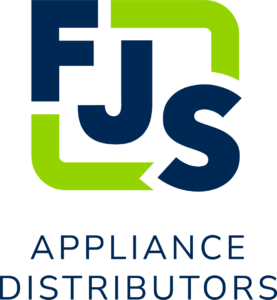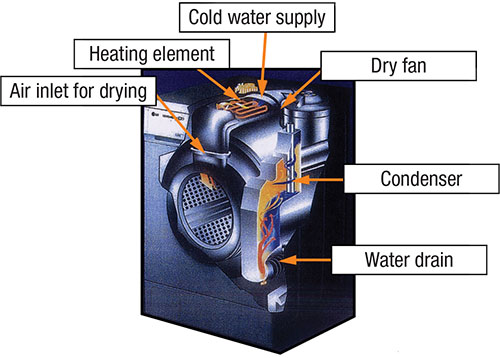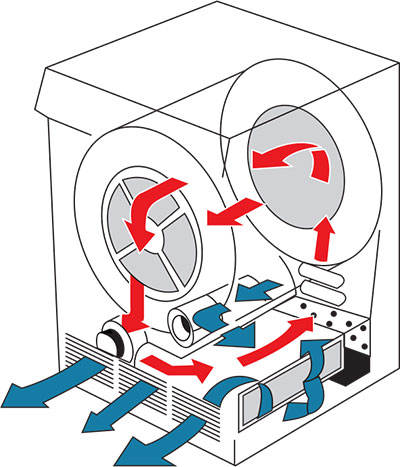Air-to-Air Condensation Drying – Stackable / Stand-Alone Ventless Dryer
How it works: This type of dryer is very popular in stackable or side-by-side washer and ventless dryer applications. The machines use one air circulation system to heat air before sending it through the laundry, and another system to dry and cool the air that has been saturated by the laundry.
After the hot air is sent through the laundry, it cycles through the condenser. At the same time, the dryer cycles room temperature air through the condenser. These air masses do not mix; they simply contrast their temperature on each other through the heat exchanger. When the air cools, moisture condenses and pumps down the drain or into a reservoir, depending on the installation. The cooled air is reheated and sent back through the laundry.
The room temperature air exhausts back into the room slightly warmer than when it entered the dryer, but with no lint or moisture because it did not mix with the hot air. The two air circulation systems continue to cycle until the laundry is dry.
Venting needed: None
Power requirements: 220V, 15Amp
Other considerations:
-
The dryer raises room temperature by 2-5 degrees in the area approximately four feet around the machine
-
The dryer needs space to access room air. It can be installed in enclosed spaces, but the doors must be open during use


